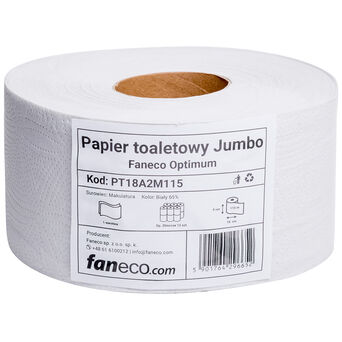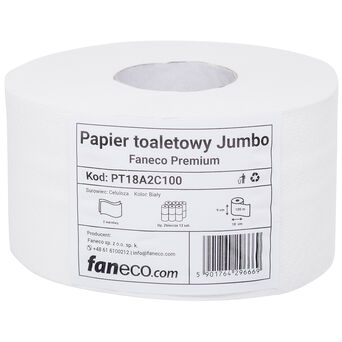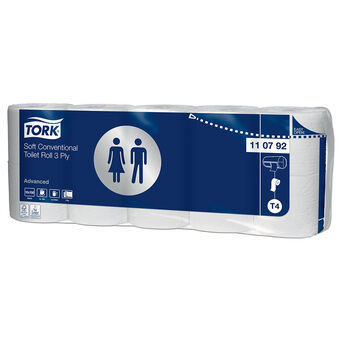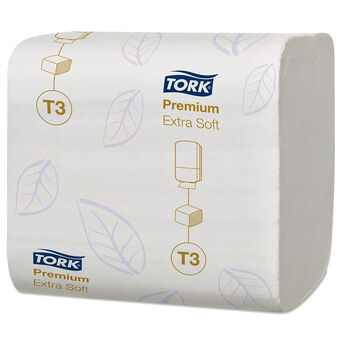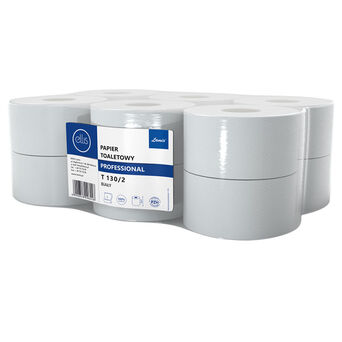What was used before toilet paper was invented?
Before toilet paper became a staple of personal hygiene that most of us can't imagine life without today, humanity had to rely on a much wider range of methods to maintain cleanliness. These practices varied significantly depending on culture, the availability of local resources, and technology. In this article, we will explore the diversity of these methods. Check out our toilet paper offer!
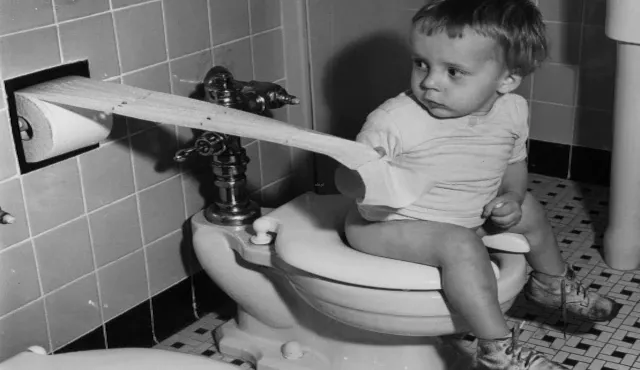
Ancient Times - From Sponges to Paper
Ancient civilizations were much more innovative when it came to personal hygiene than one might imagine. Let's take a closer look at the practices of three of them: ancient Rome, Greece, and China.
Ancient Romans: Innovators Ahead of Their Time
Known for their inventiveness in many areas, ancient Romans deserve recognition for their advanced personal hygiene methods. They used a tool called the tersorium - a special brush on a long handle with a sponge attached to it. The sponge was dipped in water, often with the addition of vinegar, to enhance its cleansing and disinfecting properties. Romans were very practical in this regard - sponges were used multiple times and often shared among many individuals. Although it may seem less hygienic from today's perspective, it was one of the most advanced personal hygiene methods in ancient times.
Ancient Greece: Natural Solutions
In ancient Greece, the approach to personal hygiene was slightly different. Greeks preferred natural materials such as stones or pieces of clay. Stones were typically smooth to avoid irritation, and clay had the additional advantage of absorbing moisture. Some sources also suggest the use of animal shells, although this practice was not as widespread. It is evident that access to natural resources had a significant impact on personal hygiene practices.
Ancient China: Pioneers of Paper
Ancient Chinese were not only pioneers in the invention of paper but also in its use for personal hygiene. The first written evidence of using paper for this purpose dates back to 589 AD. This means that the Chinese used paper for personal hygiene hundreds of years before the emergence of toilet paper. However, before that, similar to other ancient civilizations, natural resources such as leaves, grass, and pieces of wood dominated everyday hygiene practices.
Medieval Times - Using Natural Resources
The Middle Ages, spanning from the 5th to the 15th century AD, had significantly different approaches to personal hygiene compared to ancient times. Although it lacked the innovative inventions of the Roman era, it offered its unique solutions, mainly dictated by local resources.
Europe: Leaves, Moss, and Grass
Personal hygiene practices in medieval Europe were much less advanced than in ancient times. With a lack of advanced tools and technology, people had to rely on the available resources. Natural and easily accessible materials prevailed: leaves, moss, grass, or pieces of fabric.
Leaves were the simplest and most readily available solution in most regions, while moss, due to its absorbent properties, was a valuable resource where it was abundantly available. Some wealthier individuals might have used pieces of fabric, which were slightly more comfortable but also more expensive and challenging to keep clean, so they were usually reserved for the affluent sections of society.
Iceland: The Power of Peat Moss
Medieval Iceland presented one of the most interesting solutions in personal hygiene. The primary material used for cleaning was peat moss, which grows abundantly in Icelandic terrain.
This moss has many qualities that made it an ideal resource for personal hygiene. Firstly, it is soft and absorbent, making it effective while being gentle on the skin. Secondly, it is naturally antiseptic, helping to prevent infections. Additionally, its abundance in Iceland made it easily accessible to all residents, regardless of their social status.
These methods, although they may seem foreign and primitive to us, were effective and served their purpose in those times. Their diversity and innovativeness demonstrate the resourcefulness and adaptability of our ancestors in the face of daily life challenges.
Modern Times - Newspapers and Fabrics
With the advancement of civilization, significant progress was also made in personal hygiene. The modern era, from the 15th to the 19th century, brought new, more advanced solutions tailored to the needs of society.
Old Newspapers and Catalogs: First Steps Towards Toilet Paper
The transition from natural resources to toilet paper was a gradual process. In the 18th century, especially among the wealthier sections of society, people began to use old newspapers, books, and other paper prints. Although it may seem somewhat unusual from today's perspective, it was an important stage in the evolution of personal hygiene.
In the United States, catalogs became popular. There are cases where Sears Roebuck catalogs were used as toilet paper. Their popularity stemmed from the fact that they were widely available, soft, and, most importantly, free. When the company switched to smoother paper, which significantly reduced its absorbency, Sears received waves of complaints from dissatisfied customers, indicating how common the use of their catalogs was.
Fabrics: A Luxurious Solution
The wealthier sections of society, especially in Europe, often used fabrics, most commonly linen or cotton. Fabrics were much more comfortable to use, but their maintenance required significant effort - they were expensive to purchase, and cleaning them was challenging and time-consuming. Despite these challenges, for many people, the luxury and comfort offered by fabrics were worth the extra effort and cost.
Sanitary Issues
Regardless of the medium used, most people simply disposed of the used materials. As a result, cities faced serious sanitary problems. Not only did it pose a threat to public health, but it also affected the quality of life in urban areas.
The Birth of Modern Toilet Paper
Modern toilet paper, as we know it today, has its roots in the 19th century. It was a time when centuries-old practices were replaced by an invention that became an integral part of our daily lives.
Early Years: Gayetty's Medicated Paper
In 1857, American Joseph Gayetty introduced the first product resembling today's toilet paper. It consisted of packets of moistened paper sheets, called "Gayetty's Medicated Paper." Interestingly, each sheet was saturated with aloe, which had a soothing effect on the skin. However, the product was luxurious and primarily targeted wealthier customers who could afford such expenses. Despite this, Gayetty's Medicated Paper marked a new chapter in the history of personal hygiene.
Revolution: The Toilet Paper Roll
The real revolution in personal hygiene came in 1890, thanks to two brothers - E. Irvin and Clarence Scott. They introduced the first toilet paper rolls to the market, the product we know today. Initially, their idea faced resistance from conservative sections of society for whom discussing such matters publicly was unacceptable. Nevertheless, the idea turned out to be a hit, and over time, toilet paper rolls gained popularity. Today, it is such a fundamental product that it is difficult to imagine life without it.
The Evolution of Personal Hygiene - Summary
The history of personal hygiene, from leaves, stones, sponges, to modern toilet paper, is a fascinating overview of human adaptation and inventiveness. Over time, available technologies changed, as did social norms and expectations, leading us to the standards we know and practice today. Each of these changes was a response to specific needs and conditions, demonstrating how far we have come in our daily hygiene practices.
Check out our full range of bathroom supplies in our store!

